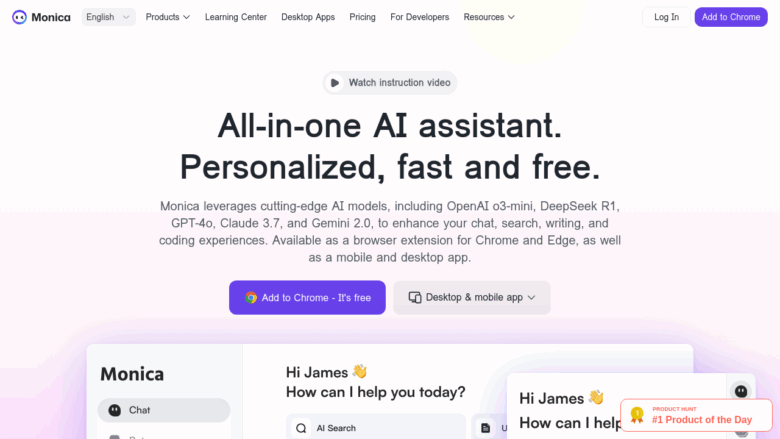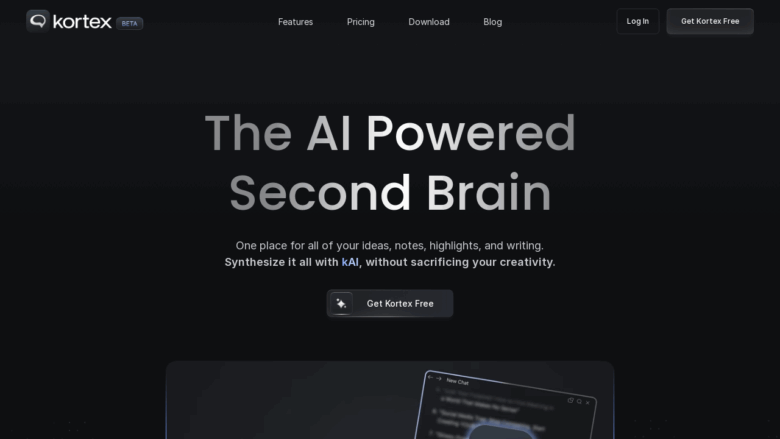In today’s fast-paced digital landscape, personal AI assistants have transformed from novelty tools to essential productivity partners. Among the emerging contenders in this space, Ring AI (available at tryring.ai) stands out as a sophisticated solution designed to streamline your digital workflow and enhance your daily productivity. This comprehensive review explores how Ring AI is positioning itself in the competitive AI assistant marketplace, examining its core functionality, technical infrastructure, and practical applications for various user scenarios.
The Evolution of Personal AI Assistants
Before diving into Ring AI’s specific offerings, it’s worth noting how personal AI assistants have evolved dramatically over recent years. What began as simple voice-activated tools for setting timers and checking weather forecasts has matured into complex systems capable of managing calendars, drafting emails, analyzing data, and even participating in creative processes. This evolution has set the stage for specialized tools like Ring AI that focus on specific productivity needs rather than trying to be everything to everyone.
Ring AI: Core Features and Capabilities
Ring AI distinguishes itself through its focus on intuitive task management and contextual awareness. Unlike broader AI platforms that attempt to cover every possible use case, Ring AI has been engineered specifically as a personal productivity assistant with advanced natural language processing capabilities.
Natural Language Task Processing
At the heart of Ring AI is its sophisticated natural language understanding system. Rather than forcing users to learn specific command structures or keywords, Ring AI interprets conversational requests with remarkable accuracy. This means you can type or speak naturally – “Remind me to follow up with Mark about the presentation tomorrow morning” or “Find the email Sarah sent last week about budget approvals” – and Ring AI will correctly interpret and execute these requests.
The system’s ability to distinguish between similar-sounding requests while understanding context makes daily interactions smoother and reduces the learning curve typically associated with productivity tools. This advanced natural language processing capability represents a significant improvement over earlier generations of AI assistants that required more structured command formats.
Contextual Memory and Learning
What truly separates advanced AI assistants from basic tools is their ability to learn from interactions and build contextual understanding. Ring AI excels in this area through its adaptive memory system that retains information from previous conversations and tasks. The longer you use Ring AI, the more it learns about your preferences, communication style, and work patterns.
This contextual awareness manifests in practical ways: Ring AI can proactively suggest follow-ups to previous tasks, recognize patterns in your scheduling preferences, or anticipate information you might need based on upcoming calendar events. For instance, before an important meeting, Ring AI might automatically gather relevant documents, previous email exchanges, or notes from past interactions with the same people – all without explicit prompting.
Cross-Platform Integration
In today’s fragmented digital ecosystem, the value of an AI assistant depends heavily on its ability to work seamlessly across different platforms and services. Ring AI addresses this challenge through an extensive integration framework that connects with popular productivity tools, communication platforms, and information services.
Current integrations include major email providers, calendar systems, project management tools like Asana and Trello, communication platforms including Slack and Microsoft Teams, and document management systems such as Google Drive and Dropbox. This cross-platform functionality ensures that Ring AI can serve as a central hub for managing information and tasks regardless of where that information originates or needs to be applied.
Advanced Information Retrieval
One of Ring AI’s standout features is its ability to intelligently search through personal information repositories. Beyond simple keyword matching, Ring AI employs semantic search capabilities that understand the meaning behind your queries. This means you can ask for “that document about quarterly marketing strategies we discussed last month” rather than trying to remember specific filenames or exact dates.
This semantic understanding extends to email searches, document retrieval, and even finding information within documents. The system can extract relevant paragraphs from lengthy reports, pull statistics from spreadsheets, or locate specific commitments made in email threads – capabilities that dramatically reduce the time spent searching for information.
Technical Architecture and Privacy Considerations
For technically-minded users, understanding Ring AI’s architecture provides valuable insights into its capabilities and limitations. Ring AI employs a hybrid processing model that balances cloud-based and on-device computation. This architecture offers several advantages:
Hybrid Processing Model
Time-sensitive and privacy-critical tasks are processed locally on your device whenever possible, minimizing latency and reducing privacy exposure. More complex operations that require significant computational resources leverage cloud infrastructure, though with strong encryption and privacy safeguards. This balanced approach results in a responsive system that maintains performance even with limited connectivity while protecting sensitive information.
Data Privacy Framework
In an era of increasing privacy concerns, Ring AI has implemented a comprehensive data protection framework. All data transmissions between local devices and cloud services use end-to-end encryption, preventing unauthorized access during transit. On the cloud side, Ring AI employs a zero-knowledge architecture for many operations, meaning the service can process your requests without actually “seeing” the underlying content.
Users maintain granular control over what information Ring AI can access and how long that information is retained. The system offers clear visualization of data access permissions and simple controls for revoking access or purging stored information. This transparency builds trust while giving users confidence that their personal and professional information remains secure.
User Experience and Interface Design
The technical sophistication behind Ring AI would be meaningless without an intuitive interface. Ring AI’s design philosophy prioritizes accessibility without sacrificing functionality – a balance that many productivity tools struggle to achieve.
Multimodal Interaction
Ring AI supports multiple interaction methods, allowing users to choose the most convenient approach for their current context. Voice commands provide hands-free operation when you’re multitasking or on the move. Text input offers precision and privacy in shared environments. The system even supports hybrid interactions, where you might begin with voice and refine with text, or use gestures to manipulate information displayed visually.
Adaptive Interface
The Ring AI interface adapts based on usage patterns and current context. Frequently used functions become more prominent, while the system learns to anticipate needs based on time of day, location, or upcoming calendar events. This adaptive approach reduces cognitive load by presenting the most relevant options without overwhelming users with excessive choices.
Progressive Disclosure
Complex functionality is managed through progressive disclosure – advanced features remain available but don’t clutter the primary interface. This approach makes Ring AI approachable for new users while providing depth for power users who need more sophisticated capabilities. The learning curve feels natural, with the system gradually revealing additional functionality as users become more comfortable with basic operations.
Real-World Applications and Use Cases
Understanding Ring AI’s practical applications helps clarify its value proposition compared to other AI assistants. While the system is versatile enough for general productivity enhancement, it particularly excels in several specific scenarios:
Knowledge Work Optimization
For professionals who deal with information-intensive work, Ring AI significantly reduces the friction of finding, organizing, and utilizing information. Writers, researchers, analysts, and similar roles benefit from Ring AI’s ability to retrieve relevant information, identify connections between different sources, and maintain organized knowledge repositories that evolve over time.
Meeting Enhancement
Ring AI transforms the meeting experience through comprehensive preparation, active assistance during meetings, and thorough follow-up. Before meetings, the system gathers relevant documents, summarizes previous discussions, and prepares talking points. During meetings, it can take notes, identify action items, and retrieve information on demand. After meetings, Ring AI generates summaries, distributes action items, and schedules follow-ups – turning the often inefficient meeting process into a streamlined workflow.
Complex Project Management
Managing multiple projects with numerous moving parts becomes more manageable with Ring AI’s assistance. The system tracks deadlines, dependencies, and resource allocations across projects. It proactively identifies potential conflicts or bottlenecks, suggests optimizations to workflows, and ensures nothing falls through the cracks. This capability is particularly valuable for freelancers, consultants, and other professionals who manage diverse workloads without dedicated project management support.
Comparison with Similar AI Assistant Tools
To properly evaluate Ring AI’s position in the market, it’s helpful to compare it with other leading AI assistants across several dimensions:
Ring AI vs. General-Purpose Assistants (Siri, Alexa, Google Assistant)
While general-purpose assistants have broader functionality including smart home control and entertainment options, they lack the depth of Ring AI’s productivity features. General assistants excel at simple tasks and broad information retrieval but struggle with context-heavy professional workflows. Ring AI offers significantly more sophisticated document handling, email management, and information organization capabilities specifically designed for knowledge work.
Ring AI vs. Specialized Productivity Tools (Notion AI, Otter.ai)
Specialized tools like Notion AI (for document creation and knowledge management) or Otter.ai (for transcription and meeting notes) offer deeper functionality in their specific domains compared to general assistants. However, Ring AI provides a more integrated experience across multiple productivity domains. Rather than switching between different specialized tools, Ring AI users benefit from a unified system that maintains context across different types of tasks.
Ring AI vs. Enterprise AI Platforms (Microsoft Copilot, Google Workspace AI)
Enterprise platforms integrate deeply with their respective ecosystems (Microsoft 365 or Google Workspace) and offer powerful collaborative features. Their primary limitation is their focus on specific ecosystems, whereas Ring AI provides more flexibility for users who work across different platforms. Ring AI also offers more personalization for individual workflows compared to the more standardized approach of enterprise systems.
Pricing Structure and Accessibility
Ring AI employs a tiered subscription model that balances accessibility with sustainable development. The free tier provides core functionality with reasonable usage limits, making it accessible for individual users or those wanting to evaluate the platform before committing. Paid tiers add advanced features, higher usage limits, and additional integrations.
For professional users, the pricing structure scales based on usage intensity rather than simply locking features behind higher tiers. This approach ensures users pay primarily for the value they extract from the system rather than for artificial feature limitations. Enterprise options include team management features, advanced security controls, and custom integration possibilities.
Implementation Considerations and Onboarding Experience
Adopting any new productivity tool requires consideration of the implementation process and learning curve. Ring AI addresses these concerns through a thoughtfully designed onboarding experience that minimizes disruption while maximizing early value.
The initial setup process focuses on connecting Ring AI to your most frequently used information sources and tools. Rather than requiring comprehensive configuration upfront, the system adopts an incremental approach, suggesting additional integrations as it learns your workflow patterns. This progressive integration strategy means users can begin deriving value immediately while gradually expanding the system’s capabilities.
Training resources include interactive tutorials, contextual help, and an extensive knowledge base. For teams, Ring AI offers collaborative onboarding options that ensure consistent implementation across groups while respecting individual workflow preferences.
The Future Roadmap for Ring AI
While current capabilities are impressive, Ring AI’s development roadmap suggests several exciting enhancements on the horizon. Planned improvements include expanded language support, deeper integration with specialized industry tools, and enhanced collaborative features for team environments.
Perhaps most interesting is the planned development of domain-specific intelligence modules that will provide tailored functionality for specific industries or roles. These specialized modules will incorporate industry terminology, workflow patterns, and compliance requirements for fields like legal, healthcare, finance, and creative production.
Who Should Consider Ring AI?
Ring AI is particularly well-suited for several user profiles:
Knowledge workers who manage large volumes of information across multiple platforms
Professionals who attend numerous meetings and need comprehensive meeting support
Project managers coordinating complex workflows with multiple stakeholders
Freelancers and consultants juggling diverse client projects and deadlines
Teams seeking to standardize information management while respecting individual workflows
The system offers less value for users with highly specialized needs who might be better served by domain-specific tools, or for those whose work primarily occurs within a single ecosystem that already has robust AI support.











